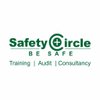Safety Trainer
Safety Trainer Interview Questions and Answers

Asked in Cholamandalam MS Risk Services

Q. What is HIRA, and can you provide examples of its application?
HIRA stands for Hazard Identification and Risk Assessment. It is a systematic process for identifying hazards and assessing risks in the workplace.
HIRA involves identifying potential hazards in the workplace such as chemical exposure, machinery malfunctions, or ergonomic risks.
Once hazards are identified, the next step is to assess the risks associated with each hazard by considering the likelihood of an incident occurring and the potential severity of the consequences.
Exampl...read more

Asked in Cholamandalam MS Risk Services

Q. What is the hierarchy of control measures in safety?
The hierarchy of control measures in safety refers to the order of effectiveness in reducing or eliminating hazards.
Elimination - Remove the hazard completely (e.g. replacing a toxic chemical with a safer alternative)
Substitution - Replace the hazard with something less hazardous (e.g. using non-slip flooring instead of rugs)
Engineering controls - Isolate people from the hazard (e.g. installing machine guards)
Administrative controls - Change the way people work to reduce expo...read more
Safety Trainer Interview Questions and Answers for Freshers

Asked in Indo German Tool Room

Q. How many types of road signs are there?
There are three types of road signs: regulatory, warning, and guide signs.
Regulatory signs: instruct drivers on what they must or must not do, such as speed limits or no parking zones.
Warning signs: alert drivers to potential hazards ahead, such as sharp turns or pedestrian crossings.
Guide signs: provide information on directions, destinations, and distances, such as highway exit signs.
Examples: stop signs, yield signs, speed limit signs, no parking signs, school zone signs, ...read more

Asked in Cholamandalam MS Risk Services

Q. What are unsafe acts and unsafe conditions, and which is more critical?
Unsafe acts are behaviors that can lead to accidents, while unsafe conditions are environmental factors that increase risk.
Unsafe Act: A worker not wearing a helmet on a construction site.
Unsafe Condition: Wet floors in a factory that can cause slips.
Unsafe Act: Bypassing safety guards on machinery.
Unsafe Condition: Poor lighting in a warehouse leading to accidents.

Asked in Safety Circle

Q. What is your opinion about sales?
Sales is an essential aspect of any business and requires a strategic approach to achieve success.
Sales is crucial for the growth and sustainability of a business
It involves identifying potential customers, understanding their needs, and offering solutions
Effective sales techniques can lead to increased revenue and customer loyalty
Sales should be approached with integrity and a focus on building long-term relationships
Sales training can help individuals develop the necessary ...read more

Asked in Cholamandalam MS Risk Services

Q. What is behavior-based safety?
Behavior-based safety focuses on identifying and reinforcing safe behaviors to reduce workplace accidents and injuries.
Emphasizes the role of individual behavior in workplace safety.
Involves observation and feedback to encourage safe practices.
Uses data collection to identify unsafe behaviors, e.g., not wearing PPE.
Promotes a culture of safety through employee involvement and training.
Example: Conducting regular safety audits to observe and correct unsafe actions.
Safety Trainer Jobs




Asked in Cholamandalam MS Risk Services

Q. Safety risk management concept
Safety risk management involves identifying, assessing, and controlling risks to prevent accidents and injuries in the workplace.
Identifying potential hazards and risks in the workplace
Assessing the likelihood and severity of these risks
Implementing control measures to mitigate or eliminate risks
Regularly reviewing and updating risk management strategies
Training employees on safety protocols and procedures
Examples: conducting safety audits, providing personal protective equip...read more
Interview Questions of Similar Designations
Interview Experiences of Popular Companies








Reviews
Interviews
Salaries
Users

















